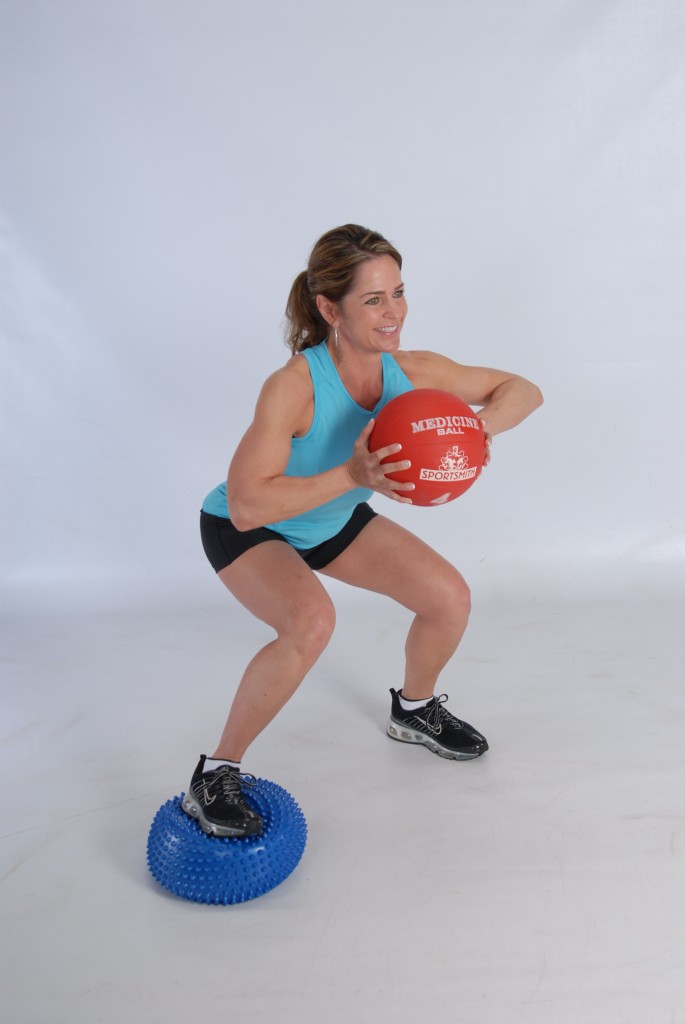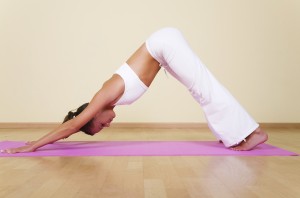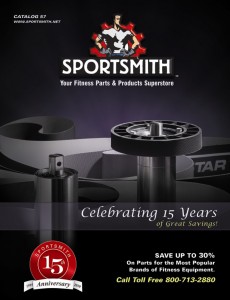Functional Movement Training is in!
Want to get in on the cutting edge of the new fitness craze?
Then get back to the basics!
Functional movement training is in! For more strength, power, flexibility, and agility, athletes of all ages need to train movements, not isolated muscles.
To effectively develop the nervous system for quickness, the muscular system for explosive power and the joints for stability and agility, proper training tools are a necessity!
Sportsmith offers the latest in functional training tools to maximize athleticism in all levels of fitness and types of sport.
Appropriate for all ages and ability; dual grip medicine balls are a versatile and safe training tool. The vast range of sizes and weight accommodates all fitness and strength levels. Medicine balls have a high level of practicality because so many functional movements can be performed using them. They improve range of motion, upper and lower body strength, flexibility and joint integrity.
Medicine ball drills typically combine speed and strength, which develop power, the ultimate goal of any athlete.
Numerous full body plyometric exercises can be done using dual grip medicine balls.
The long jump toss develops timing combined with explosive power, which is performed by explosively chest passing the ball immediately followed by a long jump. Walk to point of ball landing, and repeat.
The forward chest pass develops upper and lower body power by using the entire body to explosively drive the medball from the chest. This teaches the athlete to generate power from the hips and follow through with full upper and lower body extension.
To train stability and mobility in the shoulders, the side lateral toss and bent lateral toss are performed by using the shoulder girdle and core to toss the ball to the side. Performed one side at a time, weighted tosses produce balanced strength in the shoulders and greatly reduce the possibility of injury.
Used much like a discus, the spinning throw, generates and develops a tremendous amount of rotational power and speed. Standing side arm throws and rotational swings can also be performed promoting shoulder integrity and rotational strength. To work the core, rotation, and spinal stability the Russian twist is very effective. Sit up in a “V” position and pass the med ball hip to hip allowing the core to stabilize while rotating side to side.
The non-slip handles along with various weights make the rugged dual grip medicine ball ideal for a multitude of sport specific exercises that cannot be performed with other tools. They can be used indoors or out, in pairs or individually.
So grab a medicine ball, and take your training to the next level!
Stability balls are a fixture in virtually every training arena. They are a tried and true tool for training the entire body and accommodating virtually every fitness level, from a rehabilitation setting to elite athletes.
The strength center of the body is the “core”. Contrary to popular belief, the “core” is not just the ab muscles. The “core” is actually the abdominal muscles as well as the lower back muscles. These muscles engage to support your body in virtually every movement pattern. Whether you are sitting, running or lifting weights, your core is supporting you.
To effectively develop and strengthen the many muscles that make up the core you need a tool requiring them to all work in unison. A stability ball requires your low back and abs to work as the stabilizers as well as movers every time it is used. Not only will ball training increase your overall balance, stability, and strength but you can do full body workouts on the ball as well.
Stability balls are great home training devices. They take up very little space and you can scale the workout to your fitness level by using the ball in a variety of ways.
Full Body Exercises:
To work the upper body, place your legs on the ball and perform pushups, developing your core as well as arms and chest. Develop and shape your legs and glutes by placing the stability ball against the wall, leaning your back against the ball for support, and perform full squats with perfect posture. For more challenging hamstring development, lie supine on the floor, place heels on the ball and perform stability ball hamstring curls, holding hips high off the ground. A set of 5-8 hamstring curls paired with crunches leaving your feet on the ball is an effective combination.
One-legged sits are a great way to stimulate balance and stability throughout the core and are performed by lifting one leg while seated on the ball for 2-15 seconds, alternating sides. Turn your stability ball and your body into a “bench” and get much more out of your bench press. Lying supine on the ball, clenching the glutes and lifting the core, your body becomes the “bench”. Add dumbbells and perform a bench press movement that now works your lower body as well as your upper! Now simply roll up to a seated position, using no hands and immediately perform an overhead shoulder press, using a tremendous amount of upper back and shoulder strength combined with core stability. Resistance tubes used in place of dumbbells while performing ball exercises add an extra measure of balance and stability. Resistance tubes are also a no excuse way to bring your workout with you while traveling or working out at home.
Core Training:
In training the “core”, it is important to not only focus on the abdominals. It is important to balance flexion (abdominal) exercises, with extension (back) exercises. Performed incorrectly, or over emphasizing one muscle group can lead to muscle imbalance, postural abnormalities or injury.
A stability ball is very effective in training the core itself because it positions the body for success. Spinal and neck alignment are key in performing proper core exercises. Crunches are the most basic of abdominal exercises, but should never be performed to failure to prevent poor technique. Lie back on the ball to perform crunches, reversing down into a negative depth, extending further than would be possible on the floor. To prevent strain on the neck, try pressing your tongue against the roof of your mouth.
Remember, it is necessary to compliment abdominal work with extension exercises. Low back extensions are performed by placing the hips on the ball, planting the feet on the floor, and lifting the upper body away from the floor for sets of 8-15.
To simultaneously work flexion and extension, stability ball tuck ins are suitable for higher-level athletes. Holding body in a prone pushup stance, place the feet on the stability ball and pull the knees into the chest performing knee tuck ins for sets of 10.
For improved posture, perform weekly the exercises mentioned above, or use your stability ball daily as a chair at your computer desk!
Resistance bands are used by a wide variety of fitness practitioners from rehabilitation settings to strength and conditioning programs. Bands are easily adaptable and a large number of exercises can be incorporated into training programs with very little additional equipment. Resistance bands are particularly useful in targeting smaller muscle groups. These muscle groups are often responsible for stabilizing joints, thus making them key in injury prevention.
Proven very effective in rehab setting, band style training is also very effective in athletic movements of all kinds. The break resistant braided bands can safely withstand the pressure applied by the strongest of athletes, allowing them to be used in a multitude of resistance exercises. The figure 8 tubing is very effective for one-arm movements, allowing the other hand or a foot to be the stabilizer. The loops and cuffs can be looped around the ankles as added resistance to walking lunges and lateral lunge steps. Hold them in the hands and perform alternating lateral shoulder raises to create outstanding stability throughout the shoulder joint.
In movement training, resistance bands, tubing, or loops can turn up the heat of any ordinary exercise and greatly increase its effectiveness.
Resistance tubing is so light and compact it is a great home training device and perfect for travel. Say goodbye to excuses, this gym can be carried in your suitcase!
Agility
Athletes of all ages and types have one common goal: to become more efficient at storing and releasing power.
To develop power combined with reaction time and joint integrity, the proper training protocol utilizing the proper tools is critical. To develop this, a combination of stability, mobility, flexibility, strength, agility, and balance must be incorporated.
Sportsmith offers a wide variety of implements designed specifically to execute effective agility training.
To fine tune motor skills, coordination, and ankle stability, the agility ladder facilitates a multitude of footwork patterns. Further develop neural pathways and reaction time by designing custom patterns using the agility rings and agility dots.
Mini hurdles work exceptionally well to develop “high knees” and proper running technique in athletes of all levels. Linear and lateral “high knee” and “quick feet” drills are very effective with mini hurdles, which are quick to reveal a lagging foot.
Add reaction ball “throws” against a wall to amplify and challenge quickness! The reaction ball comes in two sizes, and challenges the body’s ability to perform quick cutting movements and coordination, pertinent to a wide variety of sports.
Acceleration and strength can be further developed using weighted vests in conjunction with any of the implements mentioned above or in addition to simplified running patterns. Need cardio vascular conditioning? Add a weighted vest to your current conditioning program!
Speed Training
To maximize and develop speed in an athlete or individual, the muscular as well as the nervous system must be challenged with different stimuli targeting the fast twitch muscle fibers.
Muscle power (the ability to generate force quickly-calculated by multiplying force by velocity) is the key aspect of many athletic events and its training is of utmost importance.
Resisted running, overhead med ball throws, jump squats, and line drills all develop muscle power. Many tools can be implemented into speed training programs to more efficiently expedite speed development. For instance, Jump ropes increase cardiovascular fitness along with foot speed. Agility ladders and cones allow custom patterns to be executed, developing acceleration, deceleration, and motor skills. Pair weighted vests with gravity resistance (bodyweight) drills as well as running drills to reach a whole new level of conditioning!
Multi dimensional and multi joint movements are the most advantageous in complete muscle integration. Combining the above implements with these types of functional power producing movement protocols will benefit almost any sport and develop the key components of athleticism.
Strength
Strength is more than the ability to move a heavy weight. The proper tools combined with a progressive, varied training program will equip you to maximize your physical potential.
The benefits of strength training are multifaceted. From increased bone density, to muscle growth, to improved self-esteem and confidence. Strength training also increases cardiovascular function and decreases body fat. It is vital in improving speed, power, strength, and muscle mass.
Whether the goal is physique enhancement or improved sports performance; time invested in strength training is required.
Dumbbells, bodybars, and kettlebells take up very little storage space and are extremely versatile. Perfect for a commercial fitness facility, clinical setting, or home gym.
Olympic lifts, bench press, curls, overhead presses, lunges and squats, not to mention hundreds of additional exercises can all be performed using dumbbells, bodybars, and kettlebells. Variation in training, or the idea of “muscular confusion”, ensures the body will never adapt to a point of no longer getting results. Prevent stagnation in your training regimen by continually adding new movements, modalities and implements to every aspect of your program. For example, perform dumbbell overhead presses standing on one foot, alternating arms. Immediately go to a set of walking lunges carrying a body bar. Finish that sequence with 1 minute of kettlebell swings. Now your workout combined not only strength, but also single joint movement training, balance, and cardiovascular fitness.
In the area of building all around strength, variety is the key component.
Lower Leg Stretching
Flexibility is vital in the area of injury prevention. Without adequate range of motion, joints are unable to withstand the demands of physical activity with resiliency.
The calf muscles are among the densest muscle groups in the body. Injury prevention is key in this area due to the severity of injury if it occurs. Specifically, damage to the Achilles tendon can be career ending in some cases.
Maximize your calf and Achilles tendon stretch with the multi –slant board and pro stretch calf stretcher.
The rocking motion of the pro stretch enables the lower leg to dynamically warm up, stimulating the neural system for activity. Proper muscular preparation greatly reduces the possibility of injury.
The multi-slant board allows several variations in degree of stretch, positively affecting every individual muscle in the calf. Perfect for post exercise stretching.
Ideally, one would have access to both devices, due to the variation in muscular need regarding a pre or post exercise state.
Routine Treadmill Maintenance Protects Your Investment and Keeps Your Exercisers Happy
Your treadmills are among the most popular pieces of cardio equipment and require maintenance on a daily, weekly, monthly and quarterly basis. Establishing an ongoing maintenance schedule assures proper and safe operation, prevents downtime and extends product life. The essential tools for treadmill maintenance are a small shop vacuum, an all purpose non-corrosive alcohol-free cleaner, a lubing agent, such as WD40, and clean cotton towels. Before performing any maintenance always, remove the equipment from its power source.
Daily Maintenance: includes wiping down the console, handrails, shrouds and heart rate grips with an alcohol-free cleaner. Inspect power cords for nicks, cuts or fraying and replace if needed. Progressive facilities are increasingly aware of member health concerns and promote the use of equipment cleaners or wipes. Exercisers help with daily maintenance by cleaning the console, handrails and heart rate grips as a courtesy to others. Choose equipment cleaners or wipes that contain an antimicrobial agent that will help disinfect the equipment from common bacteria. Do not use alcohol based or corrosive cleaners as they may cause the console to turn opaque or white.
Weekly Maintenance: wipe down the treadmill frame, striding belt and stop button. Inspect the striding belt for proper alignment, tension and fraying at the seam and edges. If fraying exists, replace the striding belt immediately. The striding belt also needs replacement when the under side of the belt feels hard and has a glazed appearance. Normal striding belt backing should be somewhat soft and smooth feeling. Also, raise the treadmill to maximum elevation and vacuum any loose debris or dust. Treadmills on carpeted areas should be placed on rubber mats to reduce static electricity build-up and help prevent dust and debris from accumulating on the striding belt, rollers and electronics.
Monthly Maintenance: includes inspecting the treadmill console for cracks, punctures, and overlays or keypads peeling up from the console base. Check that console functions are working properly. Inspect the handrails, foot rails, rear roller guard and tighten any loose bolts or screws. Replace any cracked, punctured, peeling, or damaged parts. Routine part replacements promote optimal performance and prevent costly breakdowns. Also inspect, clean and lubricate the elevation screws. This will help the treadmill operate at incline and decline more smoothly. Always remove any foreign debris from areas that move or rotate. Check owner's manual for elevation screw locations.
Quarterly Maintenance: includes lubing the striding belt and deck. Any increase in amps or breakers tripping could mean these items are not properly lubed. With the increasing number of manufacturers there is no longer standard striding belt and deck lube types. Some models have auto wax, while others may need to be lubed once a month or every three months. Striding belt and deck maintenance has the biggest impact on treadmill performance and will determine the longevity of the rollers, motors and electronics. Always refer to your owner’s manual for the correct lube type and instructions. Remove the front shroud or cover and check for any loose cables or connections, vacuum loose debris, and check the drive belt for any cracks or wear. Check the drive belt for proper tension and the front roller for any wax build up and debris around the shaft or axle. Watch for debris such as hair, threads, or loose roller bearings, which are common treadmill malfunction culprits. Owner’s manuals provide a guide through this process.
6 Quick and Easy Exercise and Health Tips
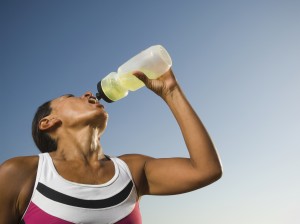 Want to get outdoors, improve your health and socialize with friends? It might be time to put on your walking shoes.
Want to get outdoors, improve your health and socialize with friends? It might be time to put on your walking shoes.
Take a tip from Sisters Together: Move More, Eat Better, a national initiative of the Weight-control Information Network (WIN): Incorporate walking into your daily exercise and health plan to:
- Help control weight
- Lower your risk for certain diseases
- Build bone density
Get moving with these 6 exercise and health tips from Sisters Together: Move More, Eat Better:
1. Make it fun. Find a partner. Your walking partner should be able to match your speed.
2. Find proper footgear. Wear shoes with proper arch support, a firm heel and thick, flexible soles.
3. Wear clothes that will keep you dry and comfortable. Look for synthetic fabrics that absorb sweat and remove it from your skin.
4. Divide your walk into sections. Warm up by walking slowly for five minutes. Then, increase your speed and do a fast walk. Finally, cool down by walking slowly again for five minutes. Do light stretching after your warm-up and cool-down.
5. Try to walk as often as possible. To avoid stiff or sore muscles and joints, start gradually. Over several weeks, begin walking faster, going farther, and walking for longer periods of time. Aim for 30 minutes of walking a day on most, if not all, days of the week.
6. Set goals and rewards. A goal might be participating in a fun walk or walking continuously for 30 minutes. Reward yourself when you meet a goal, but not with high-calorie foods.
Discover more weight control information and exercise and health tips.
Total Body with Tubing and Bands
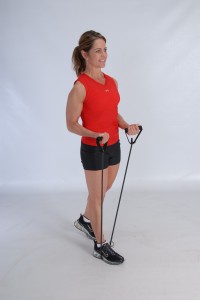 Bands and tubing are some of the most versatile pieces of fitness equipment available. They can be used from warm up to cool down in developing strength, stability, flexibility and power. Unfortunately, they are also among the most under-utilized equipment on the fitness floor.
Bands and tubing are some of the most versatile pieces of fitness equipment available. They can be used from warm up to cool down in developing strength, stability, flexibility and power. Unfortunately, they are also among the most under-utilized equipment on the fitness floor.
When used correctly, bands and tubing can deliver a total-body workout within a limited space and time.
Here are a couple of total body exercises that can be incorporated into any routine:
Bridge - Supine with Tubing/Band
This exercise/warm-up concentrates on hip extension, strength and core stability, with emphasis on abduction.
Begin by comfortably securing tubing or a band, such as the Fit-Strip Band, around your upper thigh, slightly above the knees. Lie flat on your back with your knees bent, feet parallel and arms to your sides. Support your lower back by drawing your abdomen inward, thinking about pulling your bellybutton to your spine. Squeeze the glutes and raise pelvis vertically from floor--maintain glute activity throughout the entire exercise. It is important not to let your lower back arch at any time during the movement. Use a slow tempo (4-second eccentric or negative / 2-second isometric / 2-second concentric or positive) for 2 to 3 sets of 12 to 15 repetitions. Do not allow knees to “jut” forward as the pelvis should move straight up and down, while maintaining a level position (picture a glass of water balancing on your lower pelvis to help keep the proper alignment).
Wood Chop:
Attach a Fit-Tube or JC Band to the top of a door or high on a power rack or other taller piece of equipment in the gym (make sure to pick one of the color-coded Fit-Tubes or JC Band with the right resistance for your fitness level and goals). Maintain a level pelvis throughout the entire exercise to ensure proper kinetic chain alignment.
Stand in a wide stance with the feet parallel, placing your left side closest to the band attachment. Shift your body weight to the left foot, left knee bent, trunk hinged slightly forward, right hip back, and your right leg straight. Hold one of the bands handles in each hand and clasp hands together. Straighten your right arm across your left shoulder with both hands reaching toward the attachment site.
Rotate your torso to the left with eyes and hips facing forward. Make sure to keep the wrists firm and straight to avoid stress on the wrists and forearms. Slowly rotate your upper body and pull diagonally downward to the right with hands toward your right knee. Simultaneously hinge forward at the hips and shift your body weight to the right foot. End with your arms straight, your right leg bent, left hip back, and feet flat on the floor while maintaining a straight back. Hold and slowly return to start position. Reverse the stance and movement to work the body in the opposite direction. Do these total body exercises for 2 to 3 sets of 8 to 12 repetitions on each side.
Star Trac 4000 Treadmill Belt and Deck Replacement
Star Trac 4000 Treadmill Belt and Deck Replacement
Tools Needed: Phillips Screwdriver, ¼” Allen Wrench, 4MM Allen Wrench, ½” Wrench, Bungee Cord, Pliers (optional). Tools needed may vary depending on your hardware.
- Switch the Power off on the unit.
- Next, unplug the unit from the wall
- Loosen the two lower bolts from the upper portion of the right handlebar and remove them.
- Loosen and remove the bolt in the bottom of the right handlebar.
- Now carefully twist the handlebar clockwise to remove it from the unit.
- Remove the finger guard retaining screws and carefully remove them from the deck at each end of the rear roller.
- Loosen each rear roller bolt by 10 full turns. Then count the remaining turns necessary to remove the rear roller bolts. Remember to write down the number of turns needed to remove the bolts in each side for future reference.
- Carefully remove the rear roller from the unit. Clean any wax or debris buildup from the roller and place it aside.
- Raise the shroud and secure it with a bungee cord.
- Work the drive belt off the motor pulley by hand turning the flywheel while pushing the belt aside.
- Now remove the front roller retaining bolts.
- Carefully remove the front roller from the unit. Clean off any wax or debris buildup and set it aside.
- Loosen and remove the deck bushings from the left side frame rail. Stubborn deck bushings can be removed with the assistance of pliers, once the screws have been loosened completely.
- Move the deck toward the left side of the frame to free the deck from the right side. The deck will move down once the frame has been cleared.
- Remove the deck and belt by raising the right side edge of the deck over the frame rail and sliding it to the right to remove.
- When installing a new belt or deck it is important to note that a new belt and deck surface should always be installed together. Failure to adhere to this guideline will severely shorten the life of the installed parts. Some decks can be used on both sides. However, be sure that each side is only used once. Be sure to install the belt in the proper direction on the unit. Consult the belt manufacturer for proper direction if the belt is not marked or you are unsure.
- Install the belt and deck by first putting the belt on the deck, and then installing them from the right side as a unit.
- Be sure the deck is lined up with the frame and push the deck to the left side.
- Now carefully lower the right side of the deck to insert it into the frame rail and then push the deck to the right as far as possible.
- Install the deck bushings from the left frame rail. (Check with mfr. for proper torque during install process.)
- Carefully place the front roller on the deck under the belt and push it forward into place, while placing the drive belt on the inside of the drive pulley.
- Replace the front roller bolts. (Check with mfr. for proper torque during install process.)
- Now spin the roller by hand while pushing the drive belt onto the pulley. Be sure to spin the roller several times to insure complete installation of the drive belt on the pulley.
- Install the rear roller into unit. Carefully start each bolt and turn one to two threads to ensure no cross-threading has occurred.
- Tighten each rear roller bolt the number of turns you kept earlier for reference.
- Install right handlebar and bolts into the unit. (Check with mfr. for proper torque during install process.)
- Now, Plug in and power on the unit.
- Carefully remove the bungee cord from the shroud and lower it back into place.
- Start the unit at a very slow speed and check for proper belt alignment. Remember to start at the slowest speed possible and be ready to stop the unit quickly if needed.
- If the belt is moving to right side of unit tighten the right roller bolt, If the belt is moving to the left side of the unit tighten the left roller bolt until the belt is tracking properly.
- Caution: make very small adjustments such as ¼ turns and then watch the belt for several moments before making another adjustment.
- Once the belt is tracking properly walk on the unit at a slow speed and check for belt slippage on foot fall. If this is happening tighten each of the rear roller bolts equal turns until the slippage is no longer occurring. Caution: make very small adjustments such as ¼ turns and then watch the belt for several moments before making another adjustment.
- Now use the unit at a jogging speed to check for belt travel or slippage.
- If slippage still occurs make small equal adjustments (1/4 turns) to both sides of rear roller and re-test.
- Install the finger guards once you have enough clearance from the rear roller.
- Some manufacturers require wax or lube during the install process, please consult your owner’s or service manual for further information regarding this.
Items Discussed Above
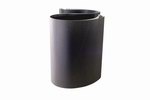 |
Treadmill Running Belt for Star Trac SS #: P031301630S | |
 |
Deck, Star Trac Treadmill SS #: P030501630S |
YOGA Products and Accessories
Save Up to 30% on Yoga Products from SPORTSMITH!!!
Did you know that SPORTSMITH stocks a variety of yoga products? Visit Sportsmith to view our special offers and quality discounts on yoga products.
 |
||||||||||||
|
||||||||||||
| SPORTSMITH 5925 S 118th E Avenue, Tulsa, Oklahooma 74146 | 1.888.713.2880 | www.sportsmith.net |
TOP 10 BENEFITS OF YOGA EXERCISE
Recently modern scientists and researchers have begun delving into the health benefits of an exercise program that’s over 5000 years old. That program is Yoga. Every day it seems that some new benefit is discovered, but here are the ones that are most important, and the reason most people take up Yoga in the first place.
FLEXIBILITY
This is probably the greatest and most obvious benefit of Yoga. The postures and positions (called Asanas) that Yoga places the body in will lead to much greater muscle and joint flexibility. For many years now, professional gymnasts and other athletes have used Yoga to help their overall flexibility and agility, and with Yoga’s current popularity, many others are now discovering the heightened muscle movement that comes from the exercises.
STRENGTH
Not only will Yoga make the body more flexible, it will also add more strength to the muscles and tendons. Again, many professional athletes perform Yoga to aid in their daily exercise, and bodybuilders and weightlifters are no exception. Keeping the body in certain positions for a certain period of time will strengthen the body. This has been known for thousands of years, by many cultures. Tai Chi Chuan, the traditional Chinese martial art and exercise form, uses a similar philosophy; maintaining prescribed positions for a period of time to strengthen muscles.
STRESS MANAGEMENT
While all the benefits of Yoga may truly never be known, this is one that anybody who’s ever practiced it will attest to. Yoga induces a feeling of inner calm and peace. Of course, this is what the traditional Yogis (one who practices Yoga) were aiming for, as Yoga was originally a religious path to enlightenment and inner peace. While modern Yoga focuses mostly on the exercise and health benefits, the other, less easily defined benefits still remain. Yoga is a perfect exercise for today’s busy lifestyle. We all need to manage the stress of daily life in some way, and what better way than something that will not only give you exercise and energy, but also calm and de-stress you in the process!
MUSCLE TONE
We all want to look good, that’s a given. There are literally thousands of exercise programs designed to help us burn fat and get in shape. Yoga practitioners have known of its toning properties for literally thousands of years. Along with a sensible diet, Yoga has been proven to burn fat and tone muscle, sometimes far more effectively than many of the “fly by night” exercise programs that seemingly pop up daily. While you won’t acquire the massive body of a bodybuilder, Yoga will help you to acquire a sleek, much more natural body tone than weightlifting will. There are even varieties of Yoga now that are considered “high intensity” that put the heart into the “fat burning zone”, and will help with weight reduction and fat loss.
PAIN REDUCTION
Many physical rehabilitation facilities are beginning to incorporate elements of Yoga into their exercise and training regimens. This is because Yoga has a bodily healing effect. While someone with an injury might not be able to perform all of the positions, some of even the most basic positions have a therapeutic effect on the body. This is especially true with upper and lower back pain, something that literally millions and millions of people suffer with daily. Yoga stretches and works muscles that might otherwise go unexercised, and those muscles in turn help to strengthen muscles and tendons that are strained or damaged in some way. Definitely check with your doctor before starting ANY exercise regimen when you are physically injured, however.
POSTURE
This is something most of us have trouble with. How many times when you were younger did your mother tell you to “sit up straight”? Well, Yoga can help you do just that. You will gain a greater understanding of your body’s overall posture, and the positions help keep muscles responsible for good posture strong and supple. You will slump your shoulders less, and you will come to understand your body’s center of gravity and how to maintain that center at all times, whether seated or standing.
HEIGHTENED ENERGY LEVELS
Most of us in today’s busy world need an energy boost now and again. Whether this is something artificial, like caffeine, or something natural, like the energy you gain from eating a piece of fruit, is a personal choice. Yoga gives you extra energy to get through your day without having to resort to outside means. Imagine being able to get through a hard day without those extra cups of coffee or cans of soda? Not only would that save you money, its overall better for your health. The fewer artificial things we ingest, the better!
PSYCHOLOGICAL BENEFITS
Doctors have long known that mental health is at least as important as physical health for a person’s overall well-being. Many Yoga practitioners report that after an exercise session, they experience a feeling of calm, peace, and overall harmony and balance. Yoga’s original purpose was as a path to religious enlightenment, and mentioned earlier, some of the less defined benefits still remain. Though modern Yoga’s purpose is for exercise and bodily health, the psychological benefits cannot be denied.
EASE
Yoga is quite easy to perform. Unlike many exercises today that focus on elaborate equipment, large and clunky machines, or require a radio to blast loud music, Yoga needs only a scant few things for a person to practice it effectively. A “sticky” mat that allows you to maintain the positions without slipping is really all that is required. Some people need what are known as “Yoga straps” to help them maintain some of the more difficult positions as well. Both of these products are inexpensive and easily transportable and storable. While other products do exist, such as rollers, blocks, mats and gloves for the hands and feet to prevent slipping, they are all optional. The term “user friendly” certainly applies to Yoga, as almost anyone can do it, and the things you require are minimal.
BALANCE AND CORE STRENGTH
Recently, scientists and exercise professionals have discovered that having a strong “core” is essential to having a strong body. The “core” muscles work to support and stabilize the spine, pelvis, and abdominal region. Many exercise programs have been developed with strengthening these particular muscles as their primary focus (Pilates currently being the most popular). Yoga exercises these muscles along with other muscles, so you essentially get a workout that combines the best elements of other exercise programs. Since many of the positions also require you to balance the body in certain ways, Yoga will also help with learning and maintaining overall body balance. This benefit in particular is why many gymnasts perform Yoga regularly, as balance is essential to their sport.
The benefits of Yoga are many, and the ten listed here are just a sample of what Yoga can do for you, both physically and mentally. Of course, consult your instructor if you have any questions or concerns about what benefits you might gain from performing Yoga regularly.
SPORTSMITH™ Launches 2010 With Warehouse and Catalog Expansion
Tulsa, OK -- January 6, 2010 -- SPORTSMITH™, the nation’s largest fitness products and equipment parts supplier, today announced the release of its expanded 2010 Winter Edition Catalog. Concurrently, SPORTSMITH™ completed its expansion into an additional 20,000 sq. foot office warehouse. A new company blog and user forum, accessible through www.sportsmith.net, has been designed and introduced to enhance the user experience. Customers still receive same-day delivery on products and equipment parts purchased online and through the company’s 192-page direct mail catalog.
“We’re extremely proud to launch our massive 2010 Winter Edition Catalog,” explained Brad Schupp, President of SPORTSMITH LLC. “We developed this publication to act as the ultimate facility maintenance reference tool for Health Club operators, complete with maintenance charts, equipment diagrams, fitness equipment parts, functional training products and maintenance information for the most popular fitness equipment brands including Life Fitness®, Star Trac®, StairMaster®, Schwinn®, Precor® and Landice®.”
The new catalog encompasses the largest selection of fitness equipment parts along with strength and functional training products and the latest eco-friendly yoga mats, blocks and straps. Notable additions include:
Life Fitness® Parts and Equipment:
- T-Series 91T, 97TI and 90T Treadmills
- 95X Elevation and 95Xi Arctic Silver Cross Trainers
- 95 Se and 93S Steppers
- 95R Elevation Indoor Recumbent and Upright Cycles
Star Trac® Parts and Equipment:
- E-Series E-TRE and E-TRxe Touch-Screen Treadmills
- E-Series E-TR, ETRx and E-TR Generation 1 Treadmills
- S-Series S-TRc and S-TRx Treadmills
Matrix® Parts and Equipment:
- T3x, T3xi and T5x Treadmills
- Treadmill Running Belts, Rollers and Decks
True Parts and Equipment:
- CS1.0, CS4.0, CS6.0 and CS8.0 Treadmills
- CS 8.0 and PS 900 Indoor Cycle Parts
Cybex Parts and Equipment:
- LCX-425T, CX445T and CX455T Treadmills
Precor® Parts and Equipment:
- EFX C576i and Amt C100i Elliptical Replacement Parts
- C966i Treadmill Replacement Parts
Nautilus® Parts and Equipment:
- T912, T914 and T916 Treadmill Replacement Parts
The SPORTSMITH™ 2010 Winter Edition Catalog also features additional savings on the most popular commercial model OEM and SPORTSMITH™ brand treadmill running belts, decks and rollers along with an expanded selection of sports performance training equipment from Agility Dots, Agility Domes, Mini Hurdles, Agility Ladders and Lateral Power Trainers.
Group exercise products now incorporate Polar® heart rate monitors, SportStep, the Original Health Club Step™, SPORTSMITH resistance bands, medicine and stability balls, yoga and exercise mats. Functional training product selection has been expanded to include specialty items tailored for balance and stability, speed and agility, sports-specific training, fitness assessment and weighted resistance.
To further boost interactivity and knowledge-sharing, SPORTSMITH™ has also established its new website blog and user forum. These features are available to anyone free-of-charge at sportsmith.net. The company blog will provide readers with up-to-date industry and company new stories, announcements and articles of interest to health club owners, journalists and health-conscious individuals.
The new SPORTSMITH™ user forum provides a real-time, moderated platform for discussion on various industry topics. Threads will include advice and dialog on topics of interest to subscribers including health center business operations, facility marketing, industry trends, employee hiring and management strategies.
“Our latest innovations reaffirm our commitment to supplying the most popular and functional fitness equipment parts and personal training products in the industry,“ Schupp explained. “SPORTSMITH™ is proud to offer the added advantage of hassle-free customer service, 24/7 online ordering and express same-day shipment.” All SPORTSMITH™ fitness equipment parts meet or exceed OEM specifications and include the full SPORTSMITH™ warranty.
For more information, call 888-713-2880 or visit www.sportsmith.net.
About SPORTSMITH™
Founded in 1995, SPORTSMITH™ is the nation’s largest supplier of fitness equipment and parts for health clubs and health-conscious individuals. The company is recognized for its superior quality, express same-day shipment on all orders, comprehensive selection of more than 40,000 individual items and overall value, with products 10 to 30 percent below competitive retail prices. The company serves customers through its 20,000 sq. foot state-of-the-art office warehouse, with orders placed by mail, fax, phone or online via its direct mail catalog and secure ecommerce website.
Preventive Equipment Maintenance Is Good for Business!
 |
|
| "Out of service" signs are bad for business. Routine preventive maintenance minimizes down time, extends equipment life and reduces your possible liability. You save money on parts, repairs and keep your clients happy.
Cleanliness and lubrication are perhaps the two most important factors in equipment maintenance and longevity," reports Brad Schupp, SPORTSMITH president. "Whether you have a few pieces of equipment or a hundred, following manufacturer guidelines for service, cleaning and lubrication optimizes equipment performance and significantly extends its useful life." Perspiration is a major corrosive force, so constant attention is required to minimize damage. Your equipment should be cleaned after each use with equipment wipes, especially those parts in contact with exercisers (grips, seats, pads and consoles). If you make the cleanser and towels, available many exercisers will clean as courtesy to the next user. Be sure to read cleanser labels thoroughly and consult equipment operations manuals to avoid any harmful materials. "It is wise to establish a daily cleaning routine backed by a weekly and monthly maintenance schedule. Create an inspection checklist numbering each piece of equipment to keep an accurate log," says Schupp. "Cardiovascular equipment requires more frequent maintenance, especially indoor group exercise cycles and treadmills. All your indoor cycles should be tuned on a weekly basis to assure optimum and uniform performance. Worn grips, seats and pedals should be replaced immediately." Regular inspections help prevent damage to equipment drive systems and electronics, which are the most costly items to repair. To reduce downtime it is wise to stock OEM-quality replacement parts for the most common repairs. Depending on your equipment, these include belts, chains, pedal straps, strength cables, pulleys, pads and grips. Although cardiovascular equipment requires the most attention, be sure to keep your strength equipment guide rods lubricated and replace pulleys and cables at the first signs of wear. |
